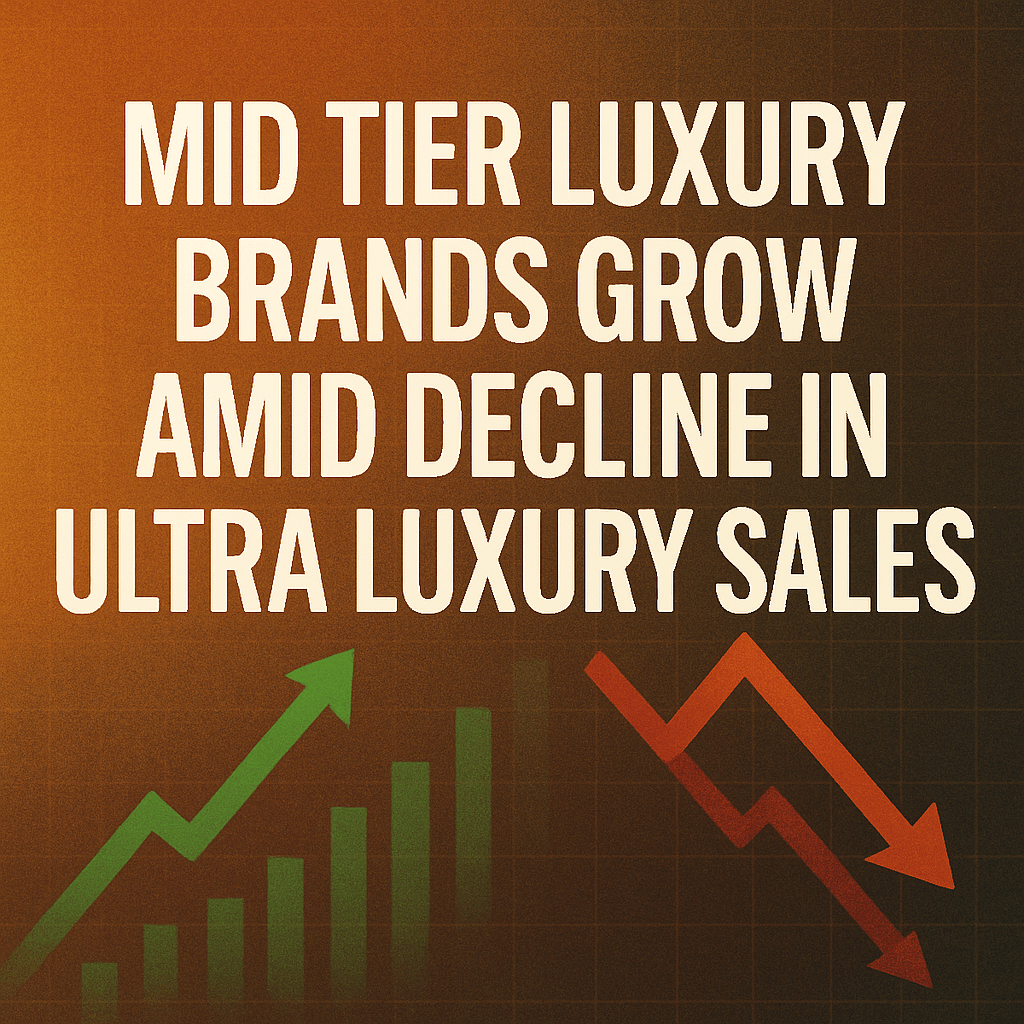Mid-Tier Luxury Brands Grow Amid Decline in Ultra-Luxury Sales

In a surprising shift within the luxury goods market, ultra-luxury brands are witnessing a decline in desirability, prompting mid-tier competitors to capitalize on the changing consumer landscape. Industry leader LVMH Moët Hennessy Louis Vuitton SE recently reported a weaker-than-expected sales performance for the latest quarter, raising questions about the sustainability of high-price luxury offerings.
Example of Price Disparity: A prime example highlighted in reports is LVMH’s sale of a Dior bag priced at around $2,800, while costing approximately $60 to produce. This stark contrast has fueled consumer skepticism. Conversely, Coach, a brand owned by Tapestry Inc., has gained traction with its $495 Tabby bag, a less-expensive alternative that has captured consumer interest and gone viral.
Consumer Behavior Shift amidst Economic Uncertainty
The evolving economic climate has led consumers to prioritize quality and value without succumbing to exorbitant prices. Fflur Roberts, head of luxury goods at Euromonitor International, points out a noticeable backlash against exorbitantly priced items. As consumers become more discerning, they are increasingly questioning the value proposition behind luxury goods, focusing not just on price but on craftsmanship and ethical sourcing.
Mid-Tier Brands Outperforming Their Rivals
The trend shows that as affluence shifts, mid-tier brands are emerging as key players in the market. Tapestry has upgraded its financial forecast following a quarter that surpassed analyst expectations. According to reports, the company has seen a surge in overall performance within the Coach brand and its other holdings, such as Kate Spade and Stuart Weitzman. The global acceptance of brands that combine quality with reasonable pricing has positioned these companies for growth amid uncertainties.
- Tapestry Inc.: Coach, Kate Spade, Stuart Weitzman.
- Amer Sports Inc.: Salomon, Arc’teryx – raised projections.
- Ralph Lauren Corp.: Noted for broad pricing strategy and classic design appeal.
In contrast, established luxury giants like Hermès International and Kering SA, owners of Gucci, have inched closer to disappointing investors, indicating a potential reevaluation of what constitutes luxury in today’s market. Notably, Chanel Ltd., a private entity, has also reported a significant decline in profits, further emphasizing the ongoing struggles within the ultra-luxury segment.
Challenges for Fast Fashion
The fast-fashion sector faces its own battles, as evidenced by rising prices at Zara and diminishing promotional activities at H&M, which are dissuading consumers from making purchases. Analysts suggest that the pricing adjustments attempted by these brands may alienate their core demographic—consumers seeking value.
Inditex SA, the parent company of Zara, H&M, and Primark are reporting slower growth, with firms like JD Sports Fashion Plc experiencing a 2% drop in same-store sales during the first quarter of 2023. These brands are grappling with the double-edged sword of rising operational costs and consumer price sensitivity.
Impact of Tariffs and Economic Trends
Tariffs imposed in various markets have systematically influenced the pricing strategies of luxury and fast-fashion brands alike. Fast Retailing Co., owners of Uniqlo, have cautioned that the financial repercussions of tariff increases could impact future earnings. On the other hand, H&M has hinted at potential price hikes as a strategy to counterbalance costs, a move that might further distance budget-conscious shoppers.
Despite economic pressures, indications of consumer resilience are emerging. Recently released data show that Primark’s US sales rebounded in April, partially attributed to seasonal holiday shopping around Easter, which provided a temporary boost in consumer spending. However, general US spending in April flatlined, indicating cautious behavior amidst growing uncertainty.
Conclusion
As consumer behavior evolves, it is increasingly clear that mid-tier luxury brands are managing to position themselves advantageously in a landscape where both ultra-luxury and fast fashion segments are faltering. With consumer demand shifting towards value and quality, brands that provide balance in their offerings stand to thrive.
As Tapestry and other mid-tier players continue to gain ground, the luxury market may be witnessing a significant redefinition of what it means to be ‘luxurious’ in today’s economic climate.
“If people have money and see something tempting, they’ll spend,” noted Bloombergs analyst Charles Allen, highlighting the unpredictable nature of consumer spending habits.